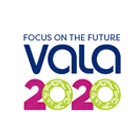The challenge of finding better indicators for library use within Victorian Public Libraries using standardised technologies and approaches
This session is sponsored by Informit
VALA2020 CC4 TABLE 1
Thursday 13 February 2020, 10.50-12.30

Tom Edwards
- Wyndham City Library
Premal Niranjan
- Yarra Libraries
Lloyd Brady
- Municipal Association of Victoria
Please tag your comments, tweets, and blog posts about this session: #vala2020 #cc4
Abstract
Operating within our State’s Local Government Performance Reporting Framework (LGPRF), Victorian public libraries are faced with the challenge of creating evidence-based indicators that reflect the dynamic and multi-faceted modern service offerings of the sector across the state. This is effectively a challenge to tell the story of how Libraries change lives, using quantitative data as the narrative.
There is a recognition amongst professionals working within Victorian libraries that the current set of indicators used within the LGPRF are largely unsatisfactory and unrepresentative of 21st century libraries. One component of this is the measurement of ‘active’ public library usage, defined as “having borrowed a library collection item in the past 12 months” which omits much of the valuable activity that occurs within our vibrant public spaces (eg. Program attendance, PC usage, co-working and study etc.)
The ICT Special Interest Group of Public Libraries Victoria met in late 2018 to grapple with the problem of advocating for better indicators using the tools of technology. One working group (comprised of the authors) was formed to specifically examine the task of measuring the broadest and most compelling indication of library use with a reproduceable, standardized methodology. Implied in this is a technology that must be economical and accessible to all Victorian Public Libraries. The authors investigated several modern technological approaches to provide this data, including WiFi analytics and AI people counting solutions (the latter being a component of Jason Griffey’s “Measure the Future” open hardware project), however a satisfactory and reliable solution has not yet been found.
The authors seek critical input from others in the sector to assist in progressing our work to effectively measure active library use with emerging technologies.
This work is licensed under a Creative Commons Attribution-NonCommercial License.

